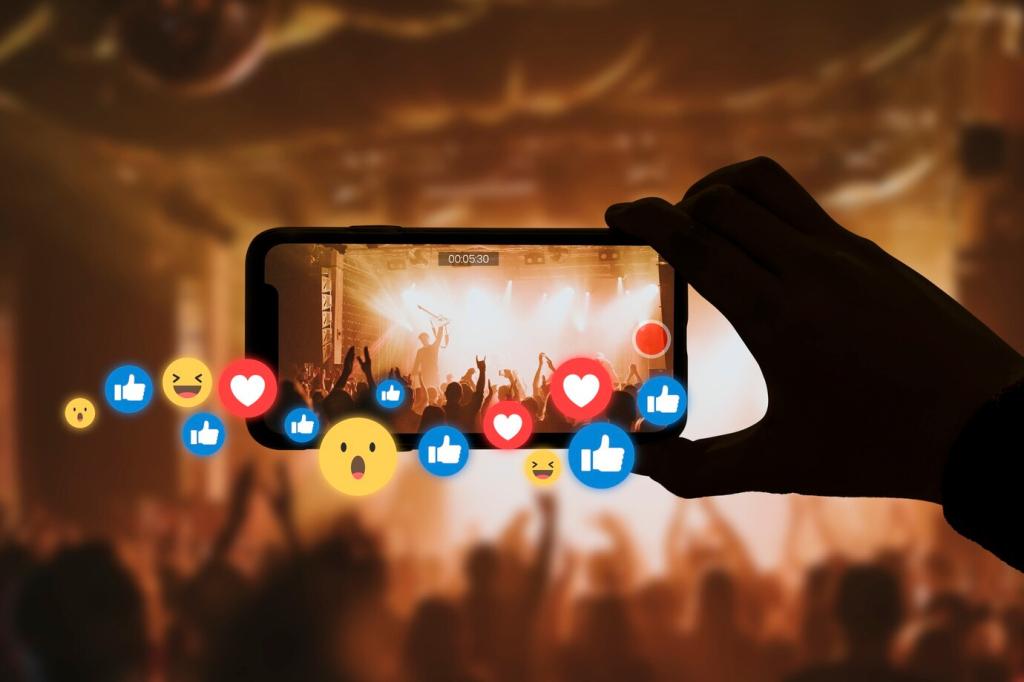Digital Media: Trends and Effects on Public Awareness
Chosen theme: Digital Media: Trends and Effects on Public Awareness. Explore how platforms, creators, and algorithms shape what we notice, discuss, and change together—then add your voice, subscribe, and help us map the most meaningful signals in a noisy world.
From Morning Scroll to Shared Consciousness
Many of us wake to a mosaic of alerts that silently prioritizes our concerns. That initial glance can frame the day’s emotional tone, from urgency to curiosity. What did your morning feed elevate today, and how did it color your choices and conversations?
Trends Reshaping News Consumption
News now rides in your pocket, peaking during commutes, lunch breaks, and late-night scrolls. Vertical video compresses complex updates into seconds, while chat apps carry breaking alerts between friends. When do you feel most informed, and when do you feel most overwhelmed by the stream?

Algorithms and Attention: What Gets Seen
Signal and Noise
Engagement metrics amplify emotionally charged posts because they keep us looking. That can drown nuance. Try following a credible but unfamiliar outlet for a week and notice how your feed’s tone, topics, and perceived urgency shift. Report back with before-and-after impressions.
The Great Personalization Trade-off
Personalization saves time but narrows horizons. Counterbalance it with intentional serendipity: mix local, national, and global sources; follow topic tags beyond your comfort zone; schedule discovery days. Tell us which strategies actually surfaced unexpected, valuable perspectives for you this month.
Transparency and Controls
Most platforms provide hidden levers: topic muting, content labels, chronological sorting, and interest resets. Take ten minutes to audit your settings today. Share the tweaks that reduced noise, increased diverse viewpoints, or restored trust, so others can replicate your most effective adjustments.
Misinformation, Verification, and Digital Literacy
How Falsehoods Travel
False posts often arrive wrapped in urgency, novelty, or moral outrage, which makes us share before thinking. After a recent storm, a viral map exaggerated damage and diverted volunteers. What emotional cues make you hit share, and how do you pause long enough to verify?
Everyday Verification Habits
Adopt quick checks: stop, read past the headline, reverse-image search, triangulate sources, and trace quotes to their origin. Save a shortlist of reliable outlets for rapid cross-reference. Share your go-to techniques and tools so readers can copy, refine, and teach them forward.
Community Defense Mechanisms
Crowdsourced notes, fact-checking collectives, and local journalists can correct narratives faster when readers participate. Join or start a small verification group with friends or neighbors. Post lessons learned from your checks, and help us build a community playbook for calm, accurate awareness.
Civic Participation in the Feed Era
From Hashtags to Town Halls
Campaigns now organize online and culminate offline: petitions, comment periods, hearings, and neighborhood meetings. Share a moment when a thread led you to show up in person, and what difference you observed when faces replaced avatars in the conversation.
Local Matters
Neighborhood feeds surface school board votes, transit proposals, and emergency updates that rarely hit national headlines. Tell us how a local account, group, or chat changed your week—fixed a pothole, found a lost pet, or rallied volunteers. These small wins build civic muscles.
Constructive Conversations
Healthy discourse needs norms: cite sources, steelman opposing views, ask clarifying questions, and step away when heat replaces light. What rules have helped your groups stay focused and empathetic? Contribute your best practices to inspire kinder, more effective digital dialogues.


Designing a Healthier Media Diet
Define a balanced ratio across formats and perspectives: public broadcasters, local reporters, investigative outlets, expert creators, and domain newsletters. Refresh quarterly. Post your personal mix and why each source earned its spot, so others can borrow and adapt without starting from scratch.
Designing a Healthier Media Diet
Replace endless scrolling with intentional sessions and recovery breaks. Use timers, follow-only lists, and reading queues that batch attention. After testing for a week, report any changes in focus, mood, and recall. Your results can help others reclaim both time and context.
